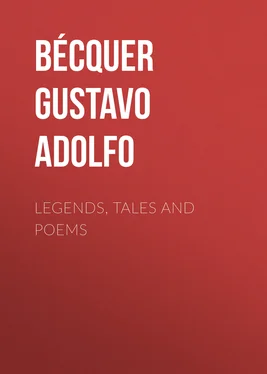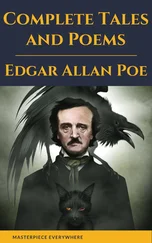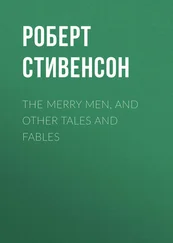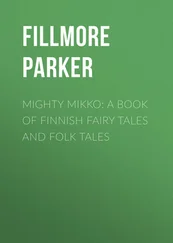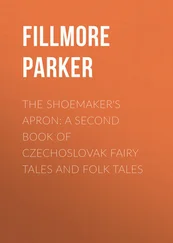Gustavo Bécquer - Legends, Tales and Poems
Здесь есть возможность читать онлайн «Gustavo Bécquer - Legends, Tales and Poems» — ознакомительный отрывок электронной книги совершенно бесплатно, а после прочтения отрывка купить полную версию. В некоторых случаях можно слушать аудио, скачать через торрент в формате fb2 и присутствует краткое содержание. Жанр: foreign_prose, literature_19, foreign_antique, на английском языке. Описание произведения, (предисловие) а так же отзывы посетителей доступны на портале библиотеки ЛибКат.
- Название:Legends, Tales and Poems
- Автор:
- Жанр:
- Год:неизвестен
- ISBN:нет данных
- Рейтинг книги:5 / 5. Голосов: 1
-
Избранное:Добавить в избранное
- Отзывы:
-
Ваша оценка:
- 100
- 1
- 2
- 3
- 4
- 5
Legends, Tales and Poems: краткое содержание, описание и аннотация
Предлагаем к чтению аннотацию, описание, краткое содержание или предисловие (зависит от того, что написал сам автор книги «Legends, Tales and Poems»). Если вы не нашли необходимую информацию о книге — напишите в комментариях, мы постараемся отыскать её.
Legends, Tales and Poems — читать онлайн ознакомительный отрывок
Ниже представлен текст книги, разбитый по страницам. Система сохранения места последней прочитанной страницы, позволяет с удобством читать онлайн бесплатно книгу «Legends, Tales and Poems», без необходимости каждый раз заново искать на чём Вы остановились. Поставьте закладку, и сможете в любой момент перейти на страницу, на которой закончили чтение.
Интервал:
Закладка:
Ex. Rumor de besos y batir de alas , p. 168, X, l. 6.
Ex. Como la ola que á la playa viene , p. 178, XXXVII, l. 19.
In the above-mentioned case, the phrase de^oro is usually joined by synalepha.
Ex. Mi frente es pálida, mis trenzas de^oro. Becquer.
Hiatus is, however, sometimes observed in this phrase.
Ex. De plumas y de oro , p. 180, XL, l. 28.
When both vowels are accented hiatus is more common than synalepha, even though there is no close syntactical relation, although the vowels may be joined by synalepha if they do not come in a constituent syllable.
Ex. ¡Oh yá isla católica patente! Herrera. [Hiatus.]
Ex. ¿Sabes tú^á dónde va? p. 178, XXXVIII, l. 4. [Synalepha.]
II. RHYTHMIC ACCENT
The second essential element of Spanish verse is a rhythmic distribution of accents within a line. Words have an accent of their own and another stronger accent on account of their position in a verse.
This extraordinary accentual stress, which strengthens periodically certain naturally accented syllables of a verse, is known as rhythmic accent . It plays somewhat the same rôle as did quantity in Latin verse. All other accents and pauses in the verse are subservient to the rhythmic accent.
Spanish verse being accentual, however, and not quantitative, the terms used to determine the regular recurrence of long and short syllables in Latin verse are not very applicable to it, and few compositions are regular in the arrangement of the stress.
As Latin terms of versification are sometimes applied to Spanish verse, the following rules may be helpful.
1. A trochaic octosyllabic line, for example, substituting stress for quantity, would be scanned
/ – | / – | / – | / —,
with the stress on the first, third, fifth, and seventh syllables.
2. Iambic verse would have a regular alternation of unaccented and accented syllables, – / – /, etc.
3. Dactylic verse would have a regular recurrence of an accented syllable followed by two unaccented syllables, etc.
/ – — | / – — |, etc.
4. Amphibrachic verse would be formed by a regular recurrence of three syllables of which the middle one would be stressed, – / —. This construction is sometimes followed in lines of twelve syllables (p. 164, I, 1. 2), and also in lines of six syllables (p. 167, VII, 1.-4).
5. Anapestic verse consists of a regular recurrence of two unstressed syllables preceding a stressed syllable, – — /. This is sometimes found in ten-syllable lines (p. 164, I, 1. i).
An accented word is called aguda when it has the accent on the last syllable, e.g. verdad, luz, yo ; llana (or grave) when it has the accent on the penult, e.g. trabajo, fruto ; esdrújula when it has the accent on the antepenult, e.g. límpido, pájaro, pórtico .
A verse is called agudo, llano (or grave), or esdrújulo according to whether its final word is aguda, llana (or grave), or esdrújula .
1. In a verso agudo the last syllable counts for two syllables. Therefore, Ni tu ni yo jamás , p. 177, XXXIII, l. 2, is a heptasyllable.
2. In a verso llano (grave) the number of syllables does not change. Therefore, Detrás del abanico , p. 180, XL, l. 27, is a heptasyllable.
3. In a verso esdrújulo , the intermediate syllable between the accented syllable and the final syllable does not count, either in enumerating the syllables in the verse or for the rhyme (assonance). Therefore, Umbrales de su pórtico , p. 180, XL, l. 32, is a heptasyllable.
In verses of different length there are different rules with regard to the distribution of accents, but the following general rules should be observed.
1. Every verse must be accented upon the syllable nominally preceding the final syllable.
NOTE: It should be borne in mind that the actual final syllable in a versa agudo counts as two syllables, and that the next to the last actual syllable in a verso esdrújulo does not count.
2. Besides the necessary accent on the next to the last syllable, all verses of seven syllables or more must have other necessary accents, which are determined by the number of syllables in the line.
3. The syllable directly preceding the one that has the rhythmical accent should never be accented, for it obstructs the proper accentuation of the constituent syllable. A syllable so accented is called obstruccionista .
Spanish verse may consist of any number of syllables from two up to sixteen. All must have an accent on the next to the last syllable.
1. Dissyllabic Verse : A dissyllabic verse may be composed of a single word (either aguda , llana , or esdrújula ).
Ex. ¡Duerme! p. 173, XXVII, l. 13.
There can be no supernumerary accents.
2. Trisyllabic Verse : A verse of three syllables can have no supernumerary accent, for the accent would be obstruccionista .
Ex. Suspira.
3. Tetrasyllable Verse : A verse of four syllables must have an accent on the third syllable. There may or may not be a supernumerary accent on the first.
Ex. De ese brío.
4. Pentasyllabic Verse : A verse of five syllables must have an accent on the fourth. It may or may not have a supernumerary accent on the first or second syllable.
Ex. Rumor sonóro , p. I 70, XV, l. 3.
5. Adonic verse is a pentasyllable with necessary accents on the first and fourth syllables.
Ex. Céfiro blando . Villegas.
6. Hexasyllabic Verse : A verse of six syllables must have an accent on the fifth. There may or may not be supernumerary accents, but never on the fourth syllable.
5
Ex. Y^entre^aquella sombra
2 5
Veíase^á^intérvalos
3 5
Dibujarse rígida
2 5
La forma del cuerpo , p. 188, LXXIII, ll. 13–16.
7. Heptasyllabic Verse : A verse of seven syllables must have an accent on the sixth, and at least one other necessary accent, which may be on any syllable except the fifth.
2 6
Ex. Su mano^entre mis manos,
2 6
Sus ojos en mis ojos , p. 179, XL, ll. 1–2.
8. Octosyllabic Verse : A verse of eight syllables must have an accent on the seventh, and at least one other accent, which may fall on any syllable except the sixth.
1 4 7
Ex. Hojas del árbol caídas
2 5 7
Juguetes al viento son. Espronceda.
9. Hendecasyllabic verse : There are two classes of hendecasyllables.
First Class : Verses of eleven syllables which have the sixth syllable and the tenth syllable stressed are hendecasyllables of the first class.
Ex. Los invisibles 'átomos del 'aire , p. 168, X, l. 1.
Hendecasyllables of the first class may have supernumerary accents on other syllables, provided they do not fall upon the fifth or ninth.
Ex. Los sus'pires son 'aire, y van al 'aire.
Las 'lágrimas son 'agua, y van al 'mar. p. 178, XXXVIII, ll. 1–2.
Second Class : Hendecasyllables of the second class are eleven-syllable verses with the accent on the fourth, eighth, and tenth syllables. There may be accents on other syllables, provided that they be not obstruccionistas .
Читать дальшеИнтервал:
Закладка:
Похожие книги на «Legends, Tales and Poems»
Представляем Вашему вниманию похожие книги на «Legends, Tales and Poems» списком для выбора. Мы отобрали схожую по названию и смыслу литературу в надежде предоставить читателям больше вариантов отыскать новые, интересные, ещё непрочитанные произведения.
Обсуждение, отзывы о книге «Legends, Tales and Poems» и просто собственные мнения читателей. Оставьте ваши комментарии, напишите, что Вы думаете о произведении, его смысле или главных героях. Укажите что конкретно понравилось, а что нет, и почему Вы так считаете.
